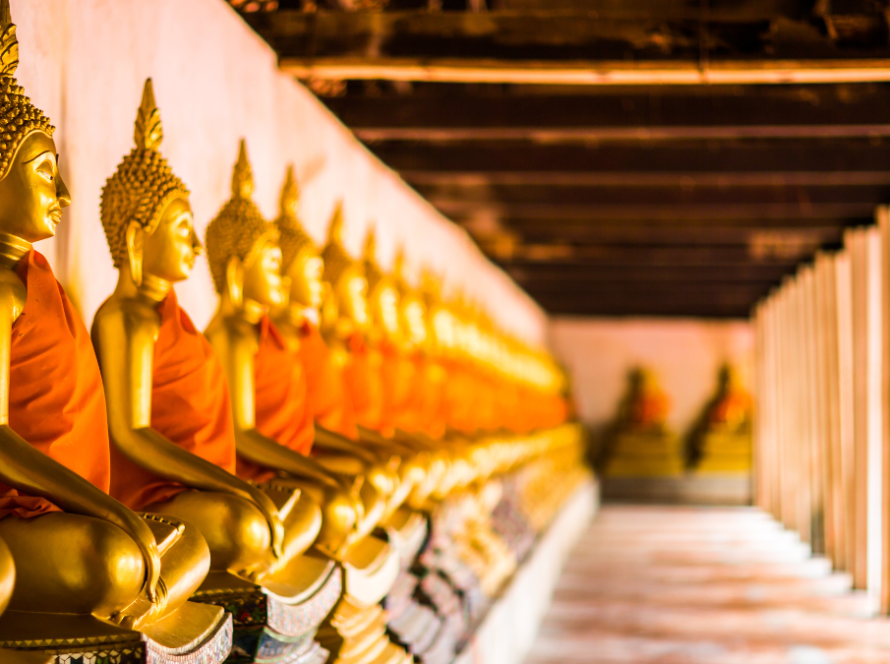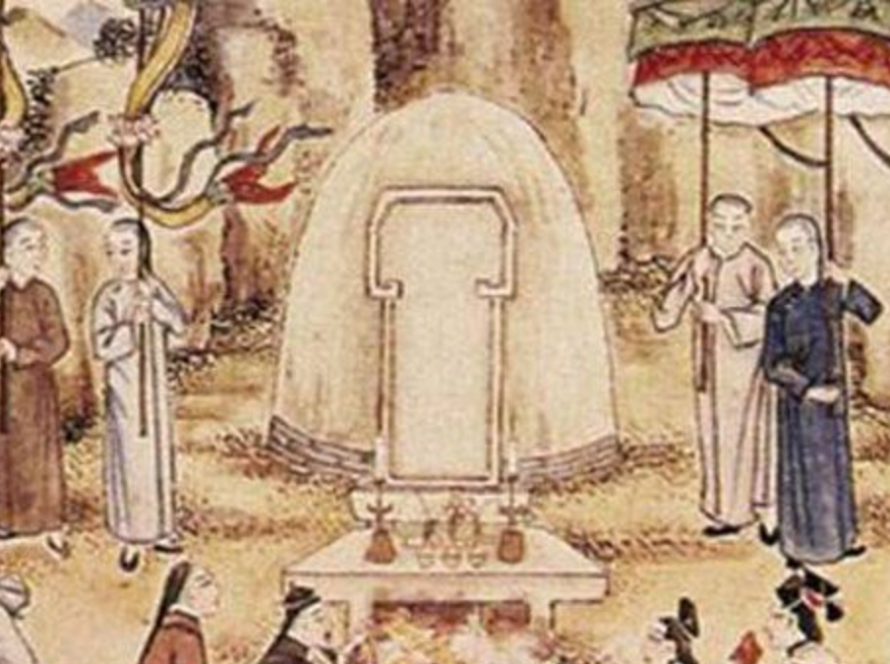The Culture and Tradition of Paying Final Respects in Chinese Customs
“养老送终” (caring for and sending off the elderly) has been a deeply rooted responsibility in Chinese culture since ancient times. The act of “送终” (sending off the elderly) is seen as a fundamental duty of the younger generation towards their elders. When an elder approaches the end of life, their children and grandchildren are expected to keep vigil by their bedside, day and night, as an expression of filial piety. Even if children are working far away, they must find a way to return home, whether by receiving a call, letter, or telegram, to ensure they can be present to send off their elderly relatives.
If the ailing elder is a woman (such as a mother or daughter-in-law), it is essential to notify her natal family in time to avoid misunderstandings or conflicts. If all the children and grandchildren are present when the elder takes their final breath, it is considered a blessing, a sign that the elder led a fortunate life. On the other hand, if any descendants are absent during this crucial moment, it may be viewed as a failure of filial duty, causing regret among the family and society.
The Ritual of Moving the Bed in Fujian: Ensuring a Dignified Departure
In some regions of Fujian, the “搬铺” (moving the bed) ritual is performed when a family member is critically ill. This practice involves moving the ailing person from a side room to the main hall, a place considered the most sacred in the house. Dying in the main hall is believed to be “dying in the proper place,” which ensures that the deceased’s soul can reunite with ancestors in the afterlife. If a person passes away in a side room, it may lead to the belief that their soul will linger and struggle to transition to the afterlife.
The process of moving the bed is a solemn and careful one, typically involving the eldest son holding the head, the second son holding the body, and the son-in-law holding the feet, with other relatives assisting. The direction of the move is critical, with the head facing forward and the feet backward. The entire ritual is performed with utmost care and respect, reflecting the family’s deep commitment to traditional customs.
The Initial Mourning Rituals: From Soul Calling to Sending Off the Soul
In ancient times, the initial mourning rituals included a soul-calling ceremony, known as “招魂” (zhao hun), where a shaman would perform rites to call back the soul of the deceased, believed to have temporarily left the body. Although this practice has faded over time, it still holds significance in some areas of Fujian. The ritual involves family members wailing loudly to express their grief and to call back the soul of the deceased.
Conversely, the practice of “送魂” (sending off the soul) is more widespread. As the person nears death, Buddhist monks or Taoist priests are often invited to recite scriptures, guiding the soul to the afterlife. Paper offerings, such as clothes, houses, and even paper servants, are burned, symbolizing provisions for the deceased’s journey to the afterlife.
The Tradition of Reporting a Death: Announcing the Passing to the Community
Reporting a death, or “报丧” (bao sang), is a crucial part of the mourning process, aimed at informing relatives and friends of the passing, inviting them to participate in the funeral rites. In Fujian, this announcement can take various forms. One common method involves firing cannons or setting off firecrackers to alert the community, followed by posting an obituary on the family’s front door. The wording and formality of these announcements vary by region, but they all serve the purpose of publicly acknowledging the death and inviting the community to mourn.
In modern times, particularly in urban areas, an official obituary may be issued by the deceased’s workplace, and announcements may also be published in newspapers or shared digitally. This tradition ensures that the deceased is honored and that their passing is recognized and mourned by all who knew them.
The Small Burial: Preparing the Deceased for the Final Rest
The “小殓” (xiao lian) or small burial is a ceremony in which the deceased is bathed and dressed in burial clothes. In many parts of Fujian, this involves a ritual called “乞水” (qi shui), where family members symbolically beg water from a nearby river or well, believed to be sanctified by the water deity. The water is used to wash the deceased, ensuring they are clean before being dressed in multiple layers of burial garments, typically in odd numbers to avoid bad luck.
This ritual is deeply rooted in the belief that cleanliness and proper attire will aid the deceased in their journey to the afterlife. The washing water is carefully disposed of, as it is believed that anyone stepping on it could suffer physical harm.
The Vigil: Keeping Watch Over the Deceased
After the small burial, a vigil or “守灵” (shou ling) is held, where the family keeps watch over the deceased. A sacred lamp is kept burning, symbolizing the soul’s light in the afterlife. The vigil is a time of mourning, reflection, and final farewells, with family members taking turns to sit by the body, ensuring the soul is not disturbed.
During this time, there are numerous customs and taboos, such as preventing cats or other animals from jumping over the body, which is believed to cause the deceased to rise as a malevolent spirit. These customs underscore the seriousness with which the family guards the deceased during this vulnerable time.
Wailing and Mourning: Expressing Grief Through Ritualistic Crying
Crying, or “哭丧” (ku sang), is a deeply emotional and ritualistic expression of grief in Chinese funerals. The family members, especially the women, express their sorrow through wailing, often accompanied by songs or chants that recount the deceased’s virtues and the family’s sense of loss. In some regions, the wailing follows specific tunes and patterns, with lyrics spontaneously created to suit the occasion.
This ritual serves not only as an outlet for grief but also as a public declaration of the family’s loss, ensuring that the deceased’s life and legacy are honored through the collective mourning of the community.
The Grand Burial: Laying the Deceased to Rest
The “大殓” (da lian) or grand burial is the final act of placing the deceased in the coffin, often on the third day after death. This ceremony is highly ritualized, with specific times chosen based on the season and the family’s circumstances. The coffin is carefully prepared, often made from fine materials and adorned with red and white symbols representing longevity and peace.
Before sealing the coffin, the family performs a series of rituals, including placing offerings and personal items inside the coffin. This act symbolizes the family’s final farewell and their hope that the deceased will have everything they need in the afterlife.

The Funeral Procession: Sending the Deceased on Their Final Journey
The funeral procession, or “出殡” (chu bin), is a highly respected tradition in which the deceased is transported to their final resting place. This event is marked by a grand display of mourning, with processions often including musicians, banner carriers, and mourners dressed in traditional attire. The procession is a public demonstration of the family’s respect and love for the deceased, with every effort made to ensure the journey to the burial site is dignified and honorable.
In rural areas, the procession may include traditional elements such as firecrackers, symbolic objects, and specific rituals that vary by region. In more urban settings, the procession might be simpler but still holds deep cultural significance.
The Burial: Interring the Deceased
The burial, or “下土” (xia tu), involves placing the coffin in the grave, often accompanied by rituals designed to protect the soul and ensure peace in the afterlife. The burial process is highly symbolic, with family members often taking turns to add the first handfuls of earth to the grave, a final act of love and duty.
In some regions, elaborate ceremonies are conducted to “purify” the burial site and protect it from evil spirits. These practices reflect a deep belief in the sanctity of the burial ground and the importance of ensuring the deceased’s peaceful rest.
The Post-Burial Rituals: Returning Home and Continuing the Mourning
After the burial, the family returns home in a ritual known as “回龙” (hui long). This marks the transition from the intense mourning period to the gradual return to everyday life. The family may change out of mourning clothes and perform rituals to cleanse themselves and their home of any remaining spirits.
The family also hosts a meal to thank those who participated in the funeral, with food often symbolizing prosperity and the continuation of life. This communal meal is an essential part of the grieving process, helping to reaffirm bonds and support the family in their loss.
The Mourning Period: Observing the Customs of Respect
The mourning period, known as “守孝” (shou xiao), is traditionally observed for up to three years, depending on the relationship with the deceased. During this time, the family may wear mourning clothes, abstain from celebrations, and avoid social activities as a sign of respect.
In modern times, these practices have been simplified, with mourning often marked by wearing a black armband or pin. However, the essence of the tradition—honoring the deceased and reflecting on their life—remains a vital part of the grieving process.
Conclusion
Chinese funeral customs, particularly in regions like Fujian, are deeply intertwined with cultural beliefs and practices that have been passed down through generations. These rituals not only honor the deceased but also serve as a way for the living to express their grief, fulfill their duties, and ensure the continuity of family and tradition. By understanding and respecting these customs, we gain insight into the values and beliefs that shape Chinese culture, allowing us to appreciate the profound significance of these time-honored practices.




